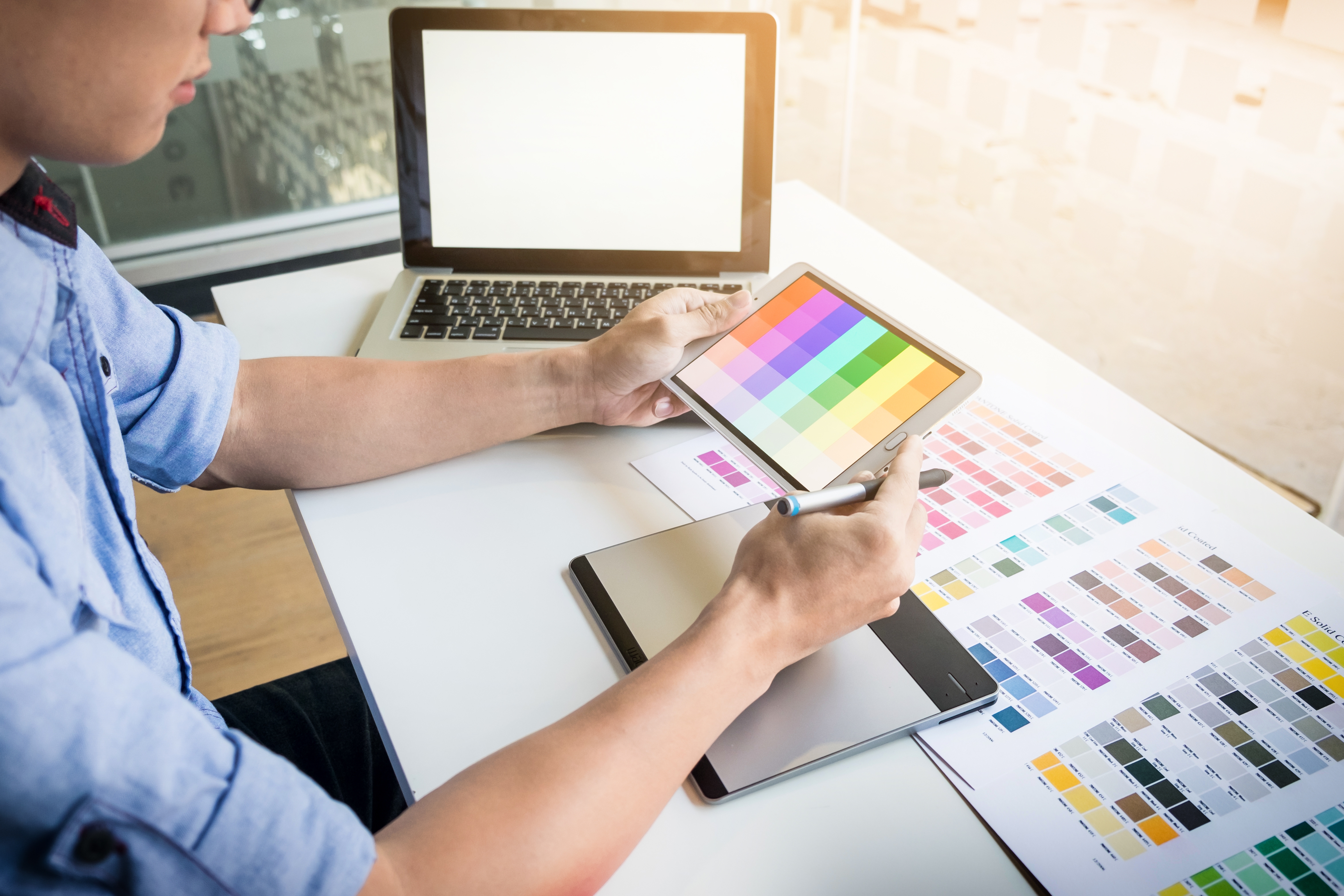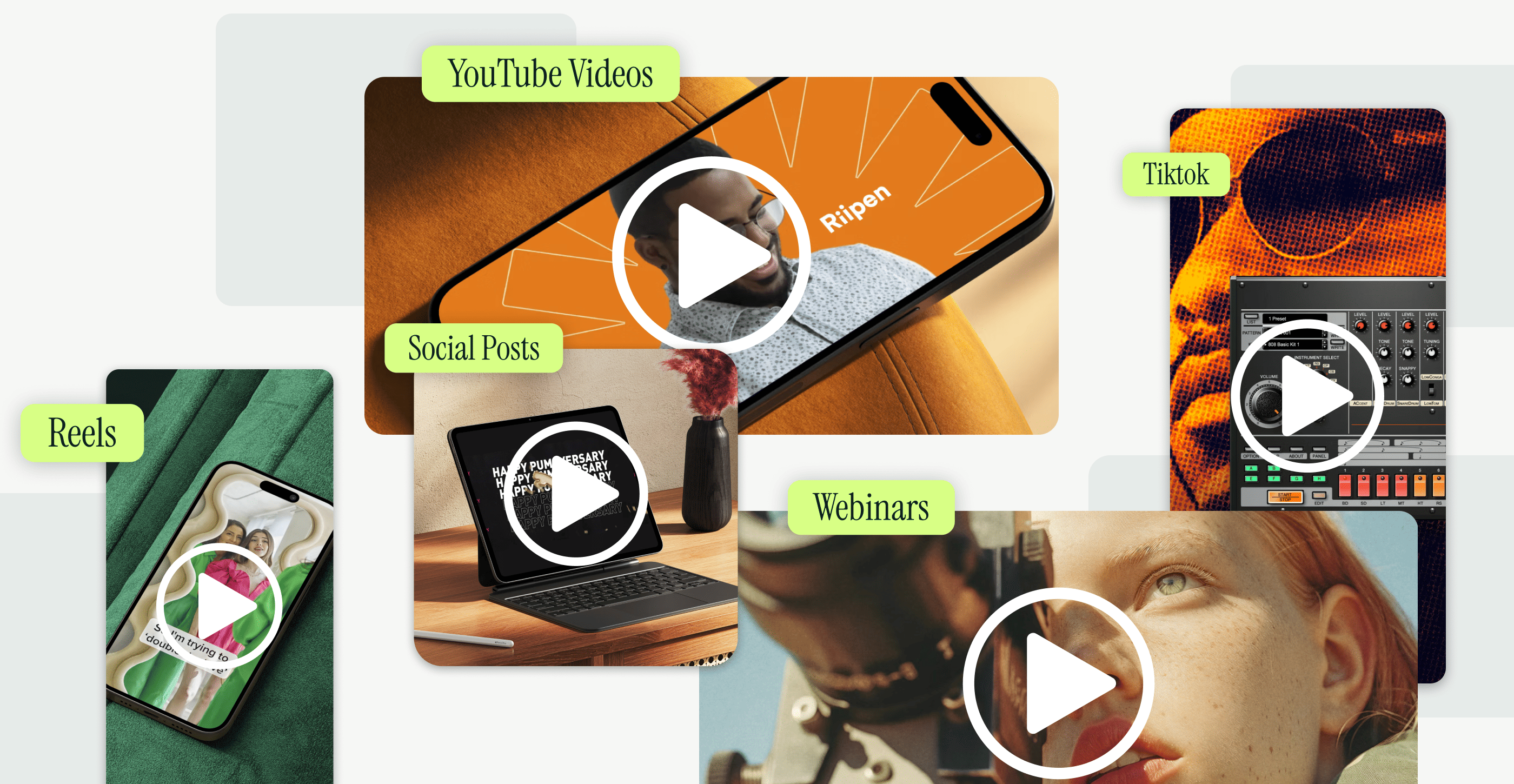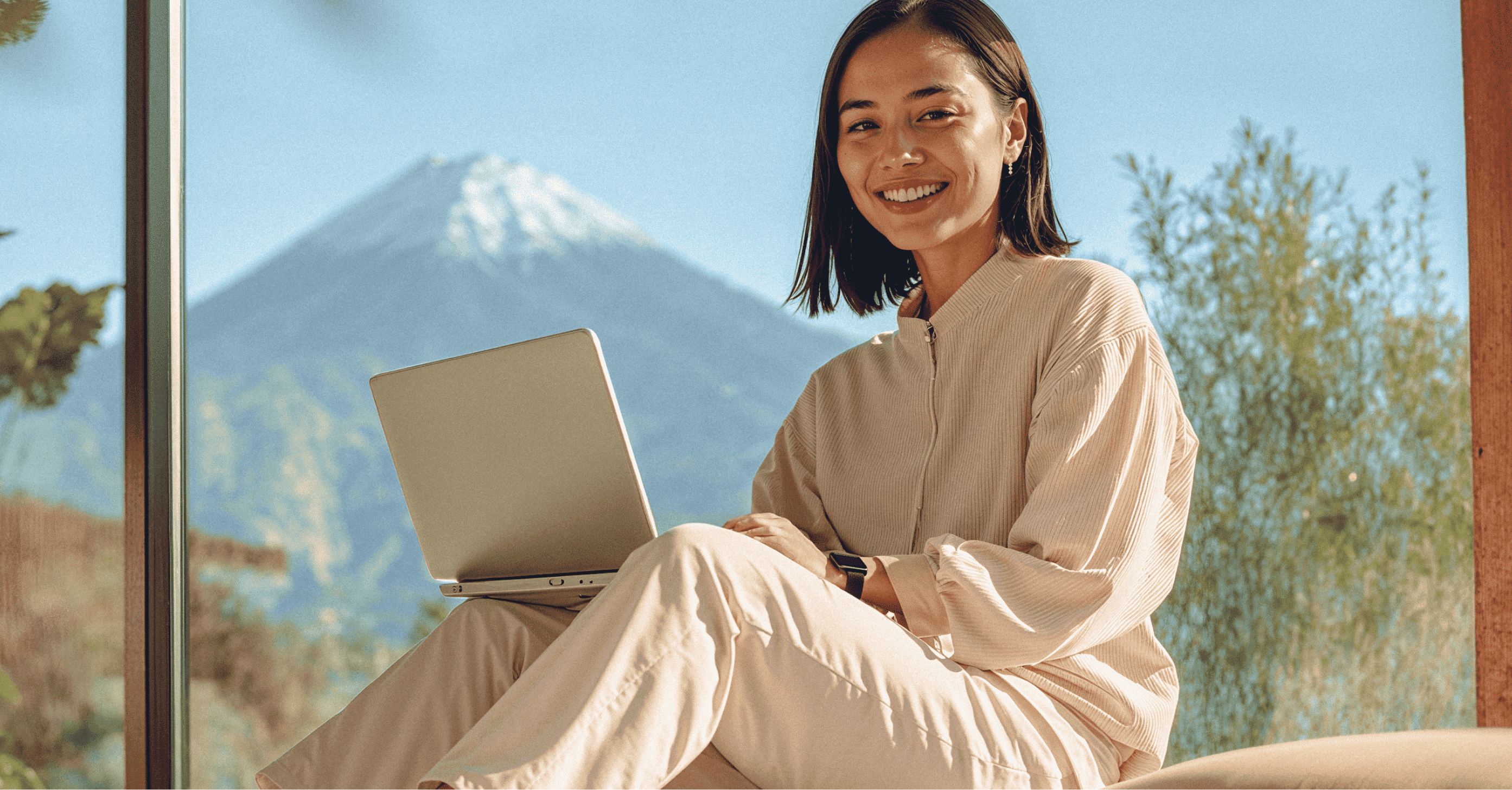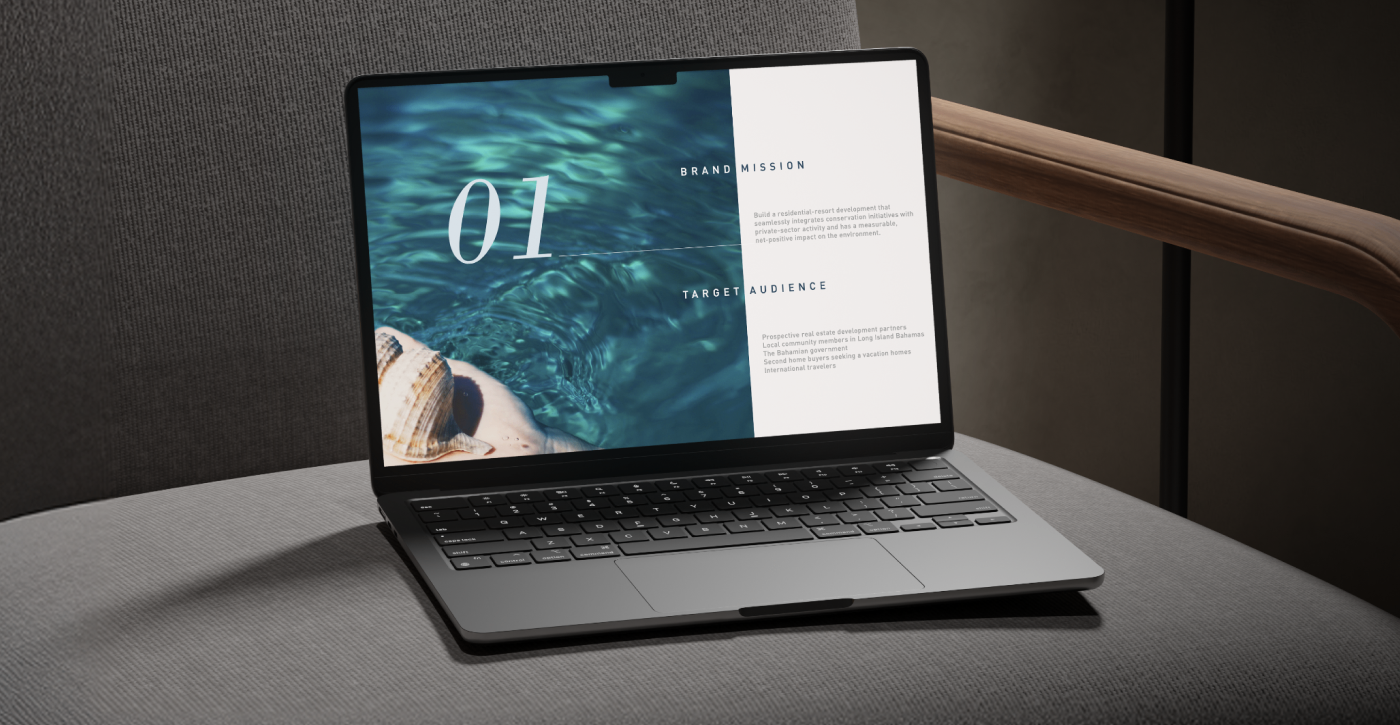
You may have heard them referred to as “brand standards” or “the brand book” or even “our company’s style guide.” Brand guidelines are the style rules a company follows to evoke a personality. There are several things you need to know before you can begin to define your brand guideline.
First, your company must have an idea of who they are. To determine this, you should look at five components. These components define your identity as a company and will influence the choices you make when it comes to the elements of brand guidelines.
- Mission – What have you set out to do?
- Vision – Where do you want to go?
- Target audience – Who do you want to serve?
- Brand personality – What 3-5 adjectives describe your company?
- Core values – What values guide your decisions?
Once you know who you are, you can begin to gather inspiration. This is a key step that shouldn’t be underestimated. Everyone who is responsible for building the brand should gather ideas—cut outs from magazines, pins from the internet, color swatches, sayings, etc.—that they feel defines the personality. This will aid the team in narrowing down exactly who you are.
Then it’s time to delve into the six elements of brand design:
- Logo
- Brand Story
- Typography
- Color Palette
- Voice
- Imagery
Logo
Your logo is a fun way to create brand recognition, but if you don’t define certain parameters, it may get skewed wrong in different situations. Make sure you include dimensions for size, proportions, spacing, color variations, and a list of don’ts. Show visual examples by the different specifications so it is clear how your logo should look.
Brand Story
This should be a summary that gets to the heart of your company. It will introduce your audience to who you are, so it should be catchy and can include your vision and mission.
Typography
The fonts you select should complement your personality. Best practices include choosing fonts that are different from your logo, defining kerning and tracking ratios, and deciding how you want your text aligned. Also, explain use cases for each font type.
Color Palette
There are a few things to remember when creating your color palette. You need to take into account the different way your colors may look when printed and digital. Make sure to include the following in your guide:
- Color match: PANTONE name and number
- Print color: CMYK
- Digital color: RGB and HEX codes
Voice
In the voice section, you will build on your content and messaging to show writers and other creatives how to sound. You may want short sentences. Or it is imperative to use active voice. Perhaps you want more melodic messaging, or the company should avoid second person. Creating these rules will help you always sound like you to consumers.
Imagery
Collect images that represent your brand—whether they are taken by you or are from other areas as a mood board—and define when images like them should be used. You want the pictures you collect to represent the feeling you want consumers to get when looking at them.
So now you have an idea of what goes into brand guidelines. Let’s take a look at 10 current trends and big brands that are pulling them off well.
1. Cheerful Geometrics
Geometrics are fun to play with. They include all sorts of shapes, and you can arrange them in fantastic ways. However, in the past, they have been associated primarily with tech and other industries that aren’t customer-facing. In 2019, expect to see geometrics that have more life to them through colors, manipulated shaping, and those all-important curves.
Brands that are using cheerful geometrics:
a. Airbnb
b. Flipboard
c. Yelp
2. Serif Fonts
Sans serif fonts have been the star of the show for a while now, so serif fonts are due for a revival. Depending on the typeface, serif fonts can be playful, elegant, childlike, or old school. And they really are standout fonts. They are best used for headlines, logos, and subheads, though. Don’t expect to see serif fonts on blogs or copy. If you’re just now working on your brand guidelines, go ahead and use a serif to make a statement, but include sans serif for your regular writing.
Brands that are using serif fonts:
a. Jamie Oliver
b. Medium
c. Vimeo
3. Adjustable Logos
Long gone are the days when we thought a logo could never change because it may shock the consumer or make the brand unrecognizable. Today, we expect brand evolution, and even one small aspect of a brand may be undeniably identifiable. So, the adjustable logos trend is beginning to pick up speed, and we expect to see many more of them in 2019. There are a few ways for a logo to be adjustable. First, it could respond to digital platforms to accommodate the type of screen (this really is a must). Second, it could change depending on use case (it may look different on a business card than it does on a t-shirt). Finally, you may choose to change certain aspects to suit a campaign (like “going green” instead of your normal color to indicate a new earth-friendly product line).
Brands that are using adjustable logos:
a. WhatsApp
b. Spotify
c. Google
4. 3D Imagery
Advances in technology have led to dynamic new possibilities for logos, lettering, and graphics. 3D imagery is one way to really boost your profile, online especially. The look of 3D requires a skilled graphic designer, but the investment is worth it when your audience is left with a permanent wow-emoji face.
Brands that are using 3D imagery:
a. Xbox 360
b. Sony Ericsson
c. Volvo
5. Negative Space
Everyone knows negative space is super important in graphic design. This trend isn’t so much about using negative space (you should!). Instead, it’s about how it is used. In 2019, you’ll see more brands using negative space cleverly, as part of the design or as a craft way to get their message across.
Brands using negative space cleverly:
a. Atlassian
b. Cisco
c. Spotify
6. Ghost Letters
Ghost lettering is a growing trend that is pretty much what it sounds like. Big text that you can see through. The trend started small, with the ghost button, but it’s grown over the years, and we expect 2019 to bring more brands using the transparent typography to draw attention to the background and images while offering a unique view of titles, headers, and logos.
Brands using ghost lettering:
a. Skype
b. IBM
c. Idol
7. Complex Detailing
Minimalism has reigned supreme for decades, but it may soon be dethroned as brands have started embracing artistry, art deco, and baroque decorative details to create stellar ornamental brand identities. If you go this way, make sure you have a clearly defined color palette and an option for your logo that is less, for instances where it is necessary (like on a business card).
Brands using complex detailing:
a. NASA
b. Shatto Milk Company
c. Pizza Hut
8. Bright Colors
Oddly, both bright colors and monochromatic schemes are trends this year. Whereas in the past, soft colors and pastels may have taken center stage, this year if you’re using color, it must be loud! Catch the eye of consumers with vibrant colors, especially if your brand is about fun, excitement, or bringing spice to your customers’ lives.
Brands using bright colors:
a. Signal Theory
b. Slack
c. Instagram
9. Monochromatic
If your brand is elegant, sophisticated, or targeting hipsters, you should opt for a monochromatic scheme and leave the bright colors to others. Monochromatics are coming back due to the rise in vintage influence. If you really want a dynamic identity, combine a monochromatic scheme with another trend, like clever negative space or cheerful geometrics.
Brands using monochromatic schemes:
a. MailChimp
b. Uber
c. Twitter
10. Vintage Influences
This trend comes and goes, and right now it's coming. People love the look of vintage pieces, and nostalgia is currently at a high with many Millennials longing for the 80s and 90s, and fashion looking back at those decades for inspiration. Vintage looks can lend an air of authenticity to brands and can even indicate artisan goods.
Brands using vintage influences:
a. Whistler Bottling Company
b. Fur and Collar
c. Bib & Tucker Bourbon
Creating a brand identity requires a lot of work. It takes several sessions of back and forth, ideation, building upon concepts, and talking through what’s really at the heart of the business. But once you have created a set of guidelines to follow, your identity will begin connecting with your workers, customers, and other stakeholders.If you're having a difficult time checking what the standard for good branding looks like, check out our guide on brand identity examples.
Superside’s visual identity service can help you lay down your guidelines by partnering with you to discover what each of the six elements can be for your company’s personality. Our top-notch, vetted senior art designers and directors are available 24/7, and we assign a personal account manager to help you through the entire process.
Whether you are just starting out with your brand guidelines or it’s time to refresh, this collection of trends should help you start drafting a design that fits your business.












